After 25 years, Might and Magic 6 reminds us what it's like to have fun
"Wish we kept all the outtakes..."
1998 was arguably one of the best years for video games. Ocarina of Time, Half-life, and Resident Evil 2 all released in the space of twelve months - to name only a few. While we celebrate the 25th anniversaries of our most foundational games, however, one shouldn't be forgotten. Sometimes, it seems like anyone with a PC at the end of the 90s had a copy, and while not all of us will remember it fully, most will remember it fondly. Released on the 30th April 1998, Might and Magic 6: The Mandate of Heaven is now 25 years old.
I don't remember if I played Might and Magic 6 in 1998 or in the next two years, but then I don't recall much of yesterday. What I do remember is getting our first Gateway PC - which came in the same dirty beige all PCs of the time seem to use - and Might and Magic 6 appearing soon after. I also remember sinking so many hours into the game that I spent weeks seeing it when I closed my eyes.
Might and Magic 6 plants you on the world of Enroth, as a party of four whose hometown of Sweet Water is destroyed by "devils." The path to revenge, however, is blocked by the Medieval equivalent of the United Nations, whom you must appease to access the mysterious Oracle. The secret to defeating the "devils" it turns out? Lasers. Big lasers.
It's a blend of fantasy and science fiction that's emblematic of the series' menagerie of inspirations.
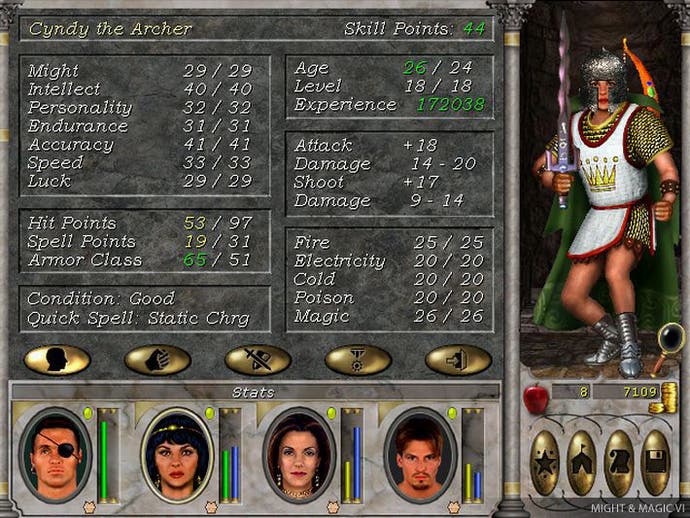
"I started playing computer games in college. Ultima and Wizardry were two of my favorites at the time, but I also played a lot of board games as well as Dungeons & Dragons," designer Jon Van Caneghem told me over email. "Might and Magic was my desire to make a game with all the things I enjoyed from the tabletop game combined with what the computer did well."
The result was a series of unprecedented scope and non-linearity for the time, providing ways for players to scratch the fantasy itch, even when their D&D groups couldn't get together. It offered a level of freedom that only grew as the series progressed.
"A lot of stuff that we take for granted now was new back then," Paul Rattner, who worked in multiple roles on the series, and as a designer on Might and Magic 6, told me. "New technology was constantly becoming available that let us do lots of things we couldn't do before with every new [Might and Magic] release."
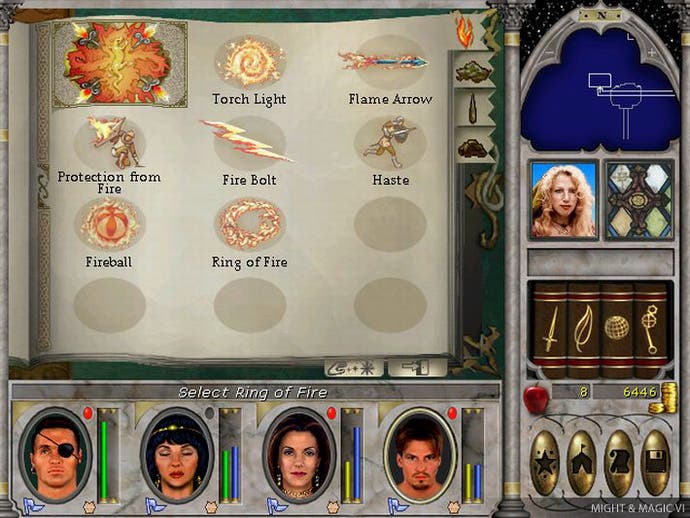
After the fifth game wrapped up the story of Sheltem that kept the series busy until then, 3DO acquired New World Computing in 1996 and Might and Magic joined the industry's leap to 3D.
Because 3D engines at the time gave the CPU all the responsibility of rendering, "this created many challenges for everything in the game and the design had to go with what was possible to maintain frame rate and memory," Van Caneghem explained. "I'm still amazed we made it work, but for the time I think we accomplished something special."
For players at the time, special was the word for it. Consoles may have ruled the rooster in most households, especially with the release of the Nintendo 64, but many of us got our first taste of the potential of PC RPGs through Might and Magic 6. Finding a broad, colourful world removed from the isometric perspective and stop-start gameplay of many CRPGs at the time, Might and Magic 6 was rendered in first-person with real freedom of movement.
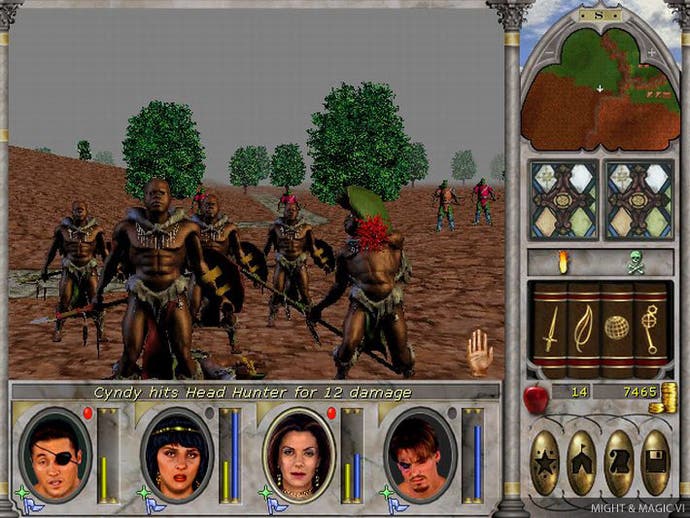
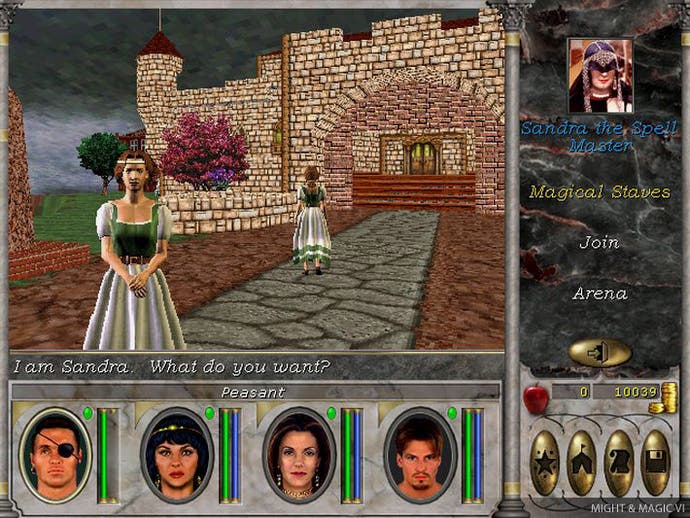
"You could see the monsters coming toward you rather than just stepping on an empty square and getting an encounter, like in the earlier Wizardry games," Rattner told me.
It was surely a step up from The Secret of the Inner Sanctum, written on an Apple II while Van Caneghem was studying at UCLA. In just over a decade, the series had gone from combat based solely on text to being realised in real-time 3D. Performance was aided by a mixture of polygon and sprite-based graphics that holds up surprisingly well. And it was all punctuated by a soundtrack composed by Steve Baca, Paul Romero, and Jennifer Wang that is emblematic of how enduring video game music of the 80s and 90s remains.
"I think," Van Caneghem added, "Might and Magic 6 is a milestone for the series and quite the milestone in computer RPGs."
Through a wealth of loot, weapons, and spells, and with dungeons larger and richer than most Skyrim caves, Might and Magic 6 felt like it placed no limits on what the player could do, where they could go, and how they played. In a lot of ways, Might and Magic 6 is probably the closest we've come to the feeling of playing a D&D campaign without breaking out the D20s. It never corralled you onto a path with overwhelming difficulty, nor pushed you along with a limiting narrative. It was, rarely even for the time, a video game that inspired one's imagination and, in the freedom inherent in Might and Magic 6 are some lessons modern RPGs could stand to learn from.
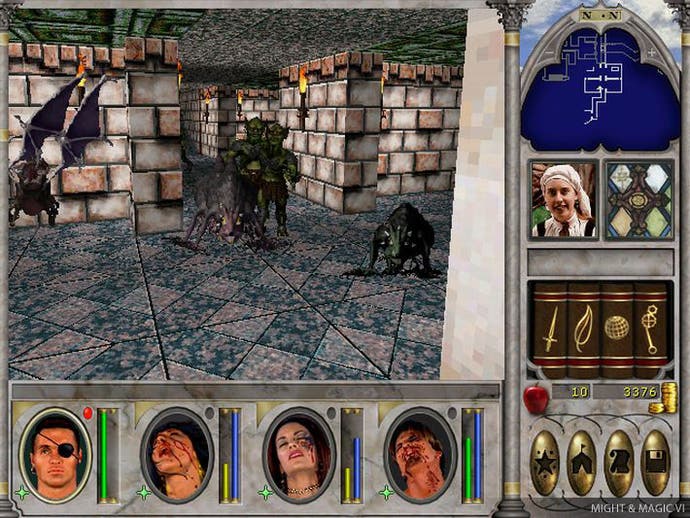
This was a freedom that was communicated back to Van Caneghem at the time as, "Playing a game, the way you want to play."
But more than anything, that freedom is punctuated by fun, something that's not a given in a modern gaming landscape built less around creating great games than managing player engagement. Whether it's a stream of references - many of them Star Trek related - or being able to visit an in-game facsimile of the New World Computing offices (complete with a goblin Jon Van Caneghem who inflicts fear as soon as you enter his office), Might and Magic 6 manages to be both self-serious and pleasantly tongue-in-cheek.
This is a sense of fun that was apparently reflected in the development process. Heading into production on Might and Magic 6, "The team at New World Computing had grown and I had additional designers and writers to work with," Van Caneghem said. "It was so much fun to have a team to iterate with, they made it possible to add new ideas and pull it all together."
Fun is a word that Van Caneghem uses often when looking back at that time. Describing how the game's voice acting was first created using New World Computing staff and later voice actors specialising in Saturday Morning Cartoons, Van Caneghem said, "Being in Los Angeles and near Hollywood made that accessible at the time and so much fun... wish we kept all the outtakes."
We can, I think, be guilty of conflating the games of our childhood, games like Might and Magic 6, with a perceived simpler time. Speaking to Van Caneghem and Rattner, however, makes me wonder if we're not really looking back to a time when fun was more obvious, a time when anything felt possible and fun really meant something to us. It wasn't something to feel guilty about or to fit in between obligations. Luckily, thanks to GOG, 25 years later Might and Magic 6 can still remind us to just have fun.
"For a lot of people, the Might and Magic games were foundational for them, much as any art you encounter in your youth can be," Rattner said. "I feel the same way about some of the other games I was playing back then."
There's nothing wrong with looking back wistfully or recapturing old positive feelings through the things we did when we were younger. We all do it. Revisiting old games, old hobbies, old places. It can be cathartic. Playing Might and Magic 6 in 2023, it feels good - it feels fun.
Van Caneghem, for his part, is glad the fun is continuing even so long after the game's initial release.
"I am very proud of what we accomplished and so happy to hear people are still enjoying it today!" he told me, before adding:
"Wow, 25 years, that's amazing."

